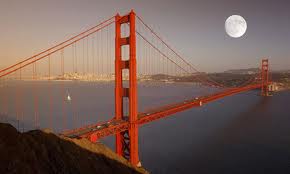 Every month, the remains of hundreds of people are laid to rest in the San Francisco Bay. With the popularity of cremation pulling ahead of burial as a means for disposition of remains, the scattering of cremains (cremated remains) is becoming a daily occurrence at popular places like the Bay.
Every month, the remains of hundreds of people are laid to rest in the San Francisco Bay. With the popularity of cremation pulling ahead of burial as a means for disposition of remains, the scattering of cremains (cremated remains) is becoming a daily occurrence at popular places like the Bay.
“There’s something calming about the water,” said Buck Kamphausen, the owner of six cemeteries and six crematories around the Bay Area.
The Orca III, captained by Curtis Brown, makes four or five private family trips each week to scatter remains, as well as trips each month to scatter the unaccompanied remains of about seventy bodies (such as those that were donated to medical research). Brown prefers a location off of Baker Beach.
“I go out near the ocean,” he said. “So, ultimately, the [remains] can be scattered on the tides throughout the world. It’s kind of a liberating, freeing thing.”
Brown also takes smaller charter boats and sailboats for scattering in the Bay.
The other company that offers this service in the Bay Area, the Neptune Society of Northern California, also makes almost daily trips for private family scatterings.
“Over the recent years,” Brown said, “I’m sure there have been more people scattered in the water than buried in the Bay Area.”
A number of people also do their own scatterings, laying cremains and urns to rest from the back of ferries or off of the Golden Gate Bridge.
The cremation rate in the state of California has far surpassed the national average—52 percent of people choose cremation over burial in the state, versus only 33 percent nationally. The funeral directors association predicts that by 2025, more than half of all Americans will choose cremation.
Americans are choosing cremation over burial for a number of reasons. The top five, according to a 2004 study by Wirthlin Worldwide commissioned by the Funeral and Memorial Information Council, are:
- It saves money.
- It saves land.
- It’s simpler [than burial].
- The body is not in earth.
- It is convenient.
Kamphausen notes that major attractions to cremation besides cost are its simplicity and dignity. Cremation allows a lot of flexibility in the way that a person’s remains are treated and memorialized—for example, scattering in the San Francisco Bay. This flexibility allows those mourning the loss to honor the deceased by determining when and where to lay their remains to rest. And the ability to be involved in the process can be therapeutic and empowering during a period of grief.
Sources:The San Francisco Chronicle

 Laid to Rest in the Bay
Laid to Rest in the Bay


 How Dare You Die Now!
How Dare You Die Now!

 “Help Me, Helen”
“Help Me, Helen”














